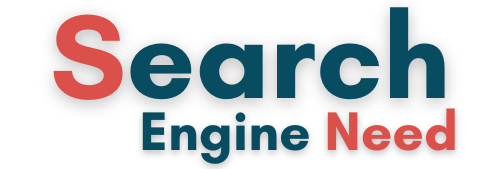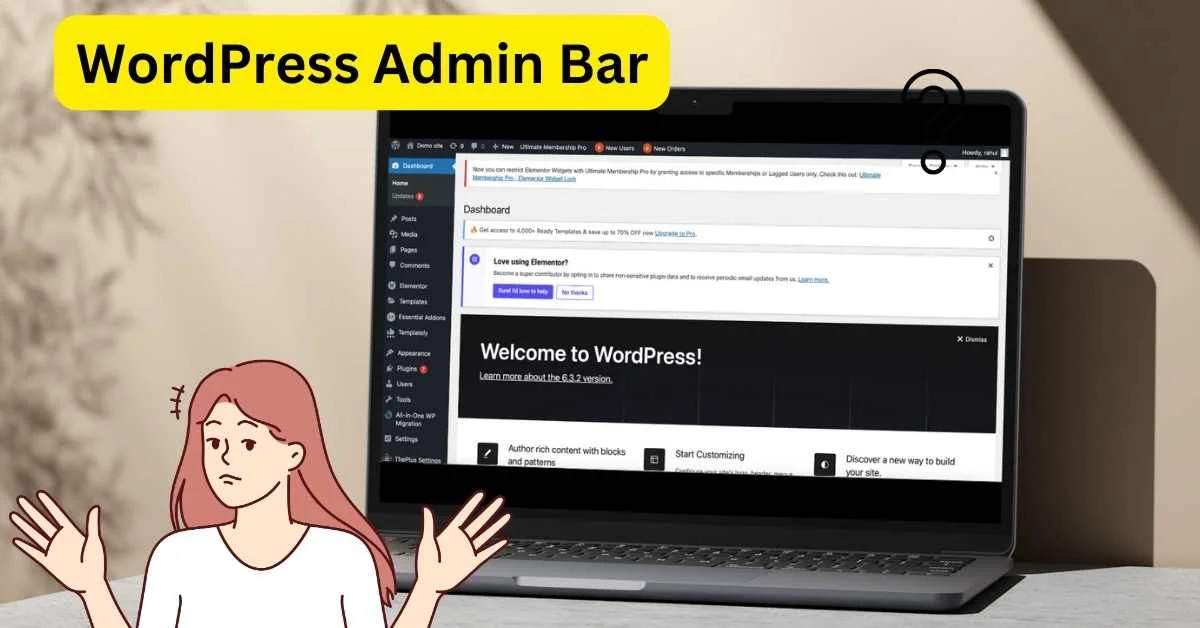When diving into the world of WordPress, both newcomers and seasoned veterans have something in common: interaction with the Admin Bar. It's like a Swiss Army knife you never knew you needed, but once you discover its functionalities, you wonder how you ever managed without it. In this comprehensive guide, we're pulling back the curtain on the WordPress Admin Bar, revealing how this unsung hero will become your trusted sidekick in website management.
Understanding the Basics: What is the WordPress Admin Bar?
WordPress Admin Bar
The WordPress Admin Bar, also known as the Toolbar, is a unique feature visible to logged-in users on your website's frontend and dashboard. This handy tool creates a seamless bridge between the live site and the management backend, allowing for quick access to various administrative functions and resources. It's WordPress' way of saving you clicks and sparing you from the headache of navigating through endless menus!
A Sneak Peek into History: The Evolution of the Admin Bar
Introduced in WordPress 3.1, the Admin Bar underwent several transformations, refining its features to maximize user convenience. It evolved with a focus on enhancing accessibility and workflow efficiency for website administrators, editors, and contributors alike.
Exploring the Admin Bar: A Closer Look at Its Features
Customizable Quick-Access Links
The beauty of the admin bar lies in its customization. Imagine needing to create a new blog post and having the link right there, waiting for you. From adding new pages and posts to updating your theme, the Admin Bar is the shortcut that every busy website manager deserves.
Updates and Notifications: Stay in the Know
See that little number that shows up next to your dashboard link? That’s your website telling you about updates you shouldn't miss. This proactive feature ensures you’re on top of website maintenance, with every necessary update just a click away.
Multisite management made easy
For those running multiple websites, the WordPress Admin Bar is nothing short of a blessing. Switching between your websites is as simple as clicking on the 'My Sites' menu, which provides a drop-down list of your sites, each leading to their respective dashboards.
The Search Function: Your Shortcut to Answers
Ever lost in the maze of your own website's pages or posts? The magnifying glass icon on your Admin Bar isn't just for show! Just type in your query, and it’ll guide you accordingly, proving itself as an invaluable time-saver.
Navigating Admin Bar Preferences: How to Turn It Off
While the Admin Bar is undeniably a powerful ally in navigating the backend of your website, we recognize that it might not be everyone's cup of tea. Some users prefer a completely clean browser window, free of any distractions, even if they are designed for assistance. So, if you're wondering whether this feature is optional, you're in luck! Turning off the WordPress Admin Bar is a straightforward process, and here’s how you can do it:
Disabling the Admin Bar for All Users
Navigate to the Dashboard: Log in to your WordPress website and go to the dashboard. This step is where your journey always begins.
Access the Users Section: On the left-hand side of your dashboard, you'll see a menu. Find and click on 'Users.' It will open up a submenu.
Edit User Profiles: Here, you’ll see a list of users. Click on ‘All Users’ and then select the profile you wish to edit. This process is the same for editing your profile or someone else's (if you're an admin).
Find the Admin Bar Preferences: As you scroll down the user’s profile, look for the section titled 'Toolbar' and you will see a checkbox next to ‘Show Toolbar when viewing site.’
Uncheck and Update: Uncheck this box to ensure the Admin Bar doesn't appear on the frontend of your website when you’re logged in. Don't forget to click 'Update User' at the bottom of the page to save your changes!
Disabling the admin Bar Using Code
For those who prefer getting their hands dirty with code, there's an alternative method. You can add a simple code snippet to your theme’s functions.php file. Before you proceed, remember that editing the source code of your theme could have unintended consequences if not done correctly. Always back up your website before making any changes.
Here's what you need to do:
Access the theme files: From your dashboard, go to 'Appearance,' then select 'Theme Editor.'
Open the Functions.php file: On the right side, you’ll see a list of theme files. Find the ‘functions.php’ file and click to open it.
Insert the code: At the end of the file, paste the following code snippet:
add_filter( 'show_admin_bar', '__return_false' );
This code tells WordPress to stop displaying the admin bar for all users.
Save and close: Click on 'Update File' to save your changes. After this, the admin bar will disappear from the frontend view for all users.
Things to Keep in Mind
While disabling the Admin Bar might be beneficial for a cleaner look or to avoid distraction, remember that it serves as a shortcut to many WordPress functions. Disabling it could mean a few extra clicks or a bit more navigation when you need to access various features.
Furthermore, if you choose to use code to disable the Admin Bar, any mistakes in editing source files can cause issues on your site. Always double-check the code you enter, or consult with a professional if you’re unsure.
Enhancing Your Admin Bar Experience
Personalizing with Plugins
Yes, the admin bar is fantastic as is, but why stop there? Expand its capabilities with plugins designed for admin bar customization. Add shortcuts, create new menus, or even integrate tools that provide analytics snapshots. The possibilities are as limitless as your imagination.
User Role Management: A View for Everyone
Not every user needs to see all the Admin Bar offers. With user role management, customize what different user levels can see, maintaining a clean, uncluttered view. This way, contributors stay focused on content, while administrators have a comprehensive control panel.
Conclusion:
To wrap things up, the WordPress Admin Bar is the silent workhorse dedicated to making your website management experience smooth and efficient. It’s the bridge between the backend and the live site, a dashboard for quick access, the notifier of updates, and so much more. By understanding and optimizing this tool, you streamline not only your workflow but also enhance your website’s functionality. Remember, a tool is only as good as the hands that wield it. So, get familiar with your admin bar and start wielding away!
FAQs About the WordPress Admin Bar
1. Can I disable the WordPress Admin Bar?
Absolutely! The admin bar can be disabled from your user profile page. Simply uncheck the box that says “Show Toolbar when viewing site,” and it will no longer appear on the frontend.
2. Is it possible to customize the admin bar without plugins?
Yes, you can customize the Admin Bar using code snippets inserted into your theme’s functions.php file. However, this requires a bit of coding knowledge, so proceed with caution!
3. Can I add my custom links to the Admin Bar?
Definitely! You can either use Admin Bar-specific plugins or add custom code to your functions.php file to include your shortcuts, depending on your comfort level with coding.
4. Why don’t I see the Admin Bar on my website?
If you’re logged in but still don’t see the Admin Bar, it might be disabled from your profile settings, or there could be a conflict with your theme or plugins causing it to disappear.
5. Does the Admin Bar affect website performance?
No, the Admin Bar is a lightweight tool and doesn’t impact the loading speed of your website for visitors. It’s only visible to logged-in users, keeping your site performance smooth for visitors.


